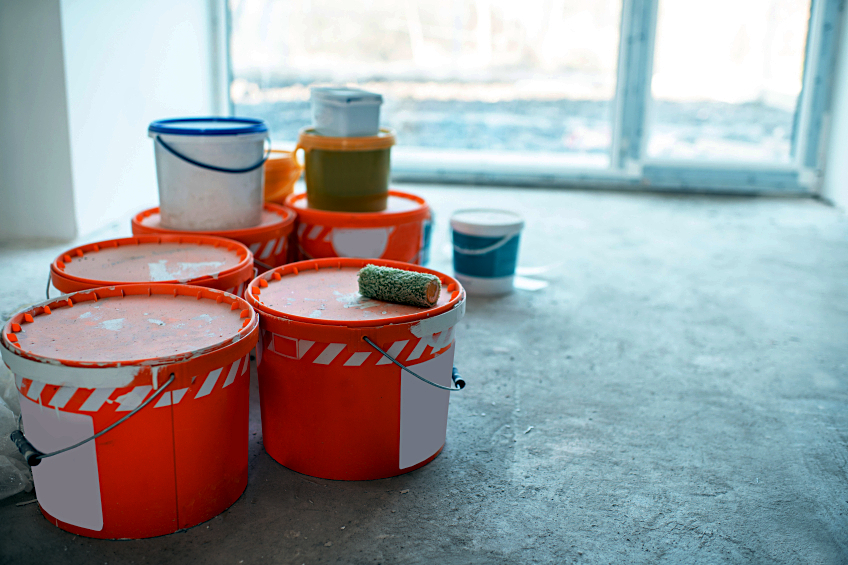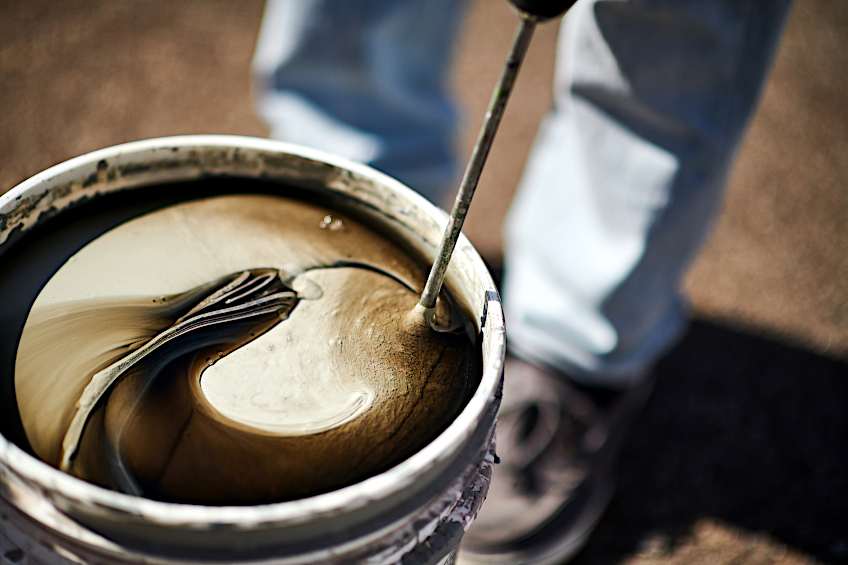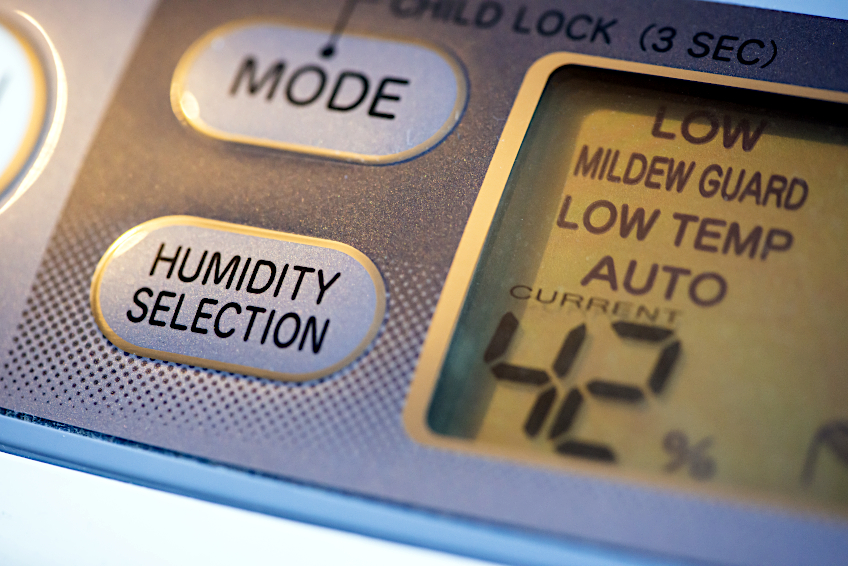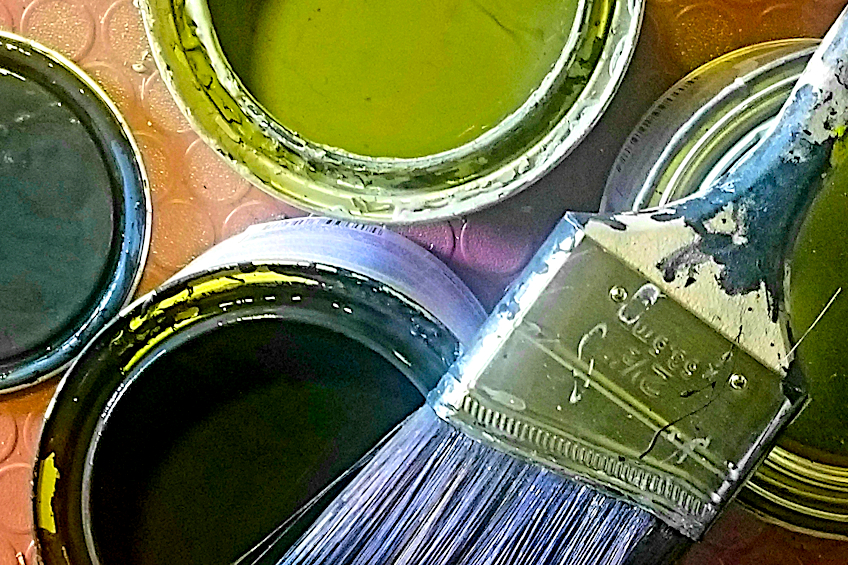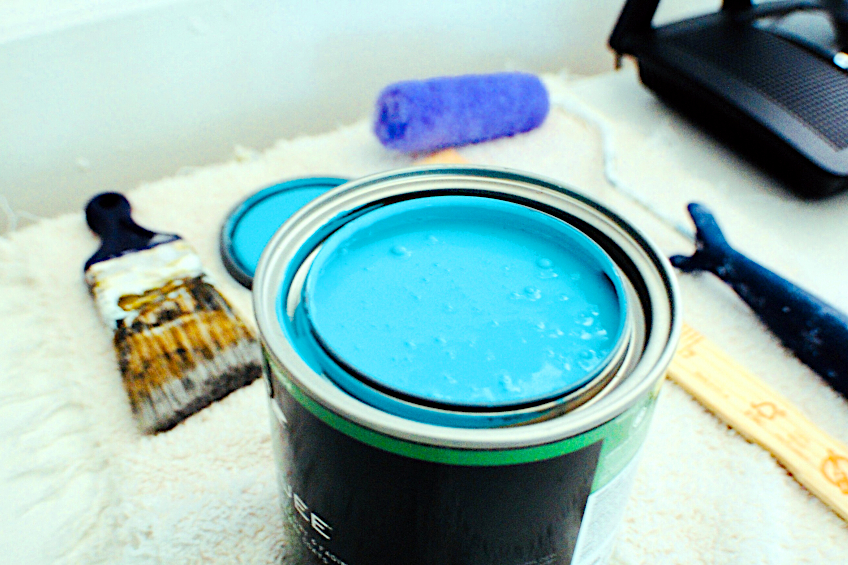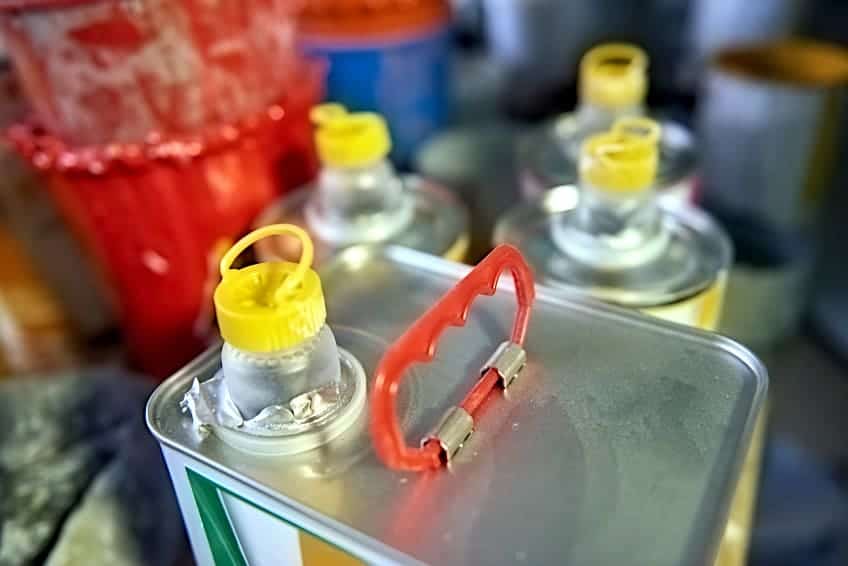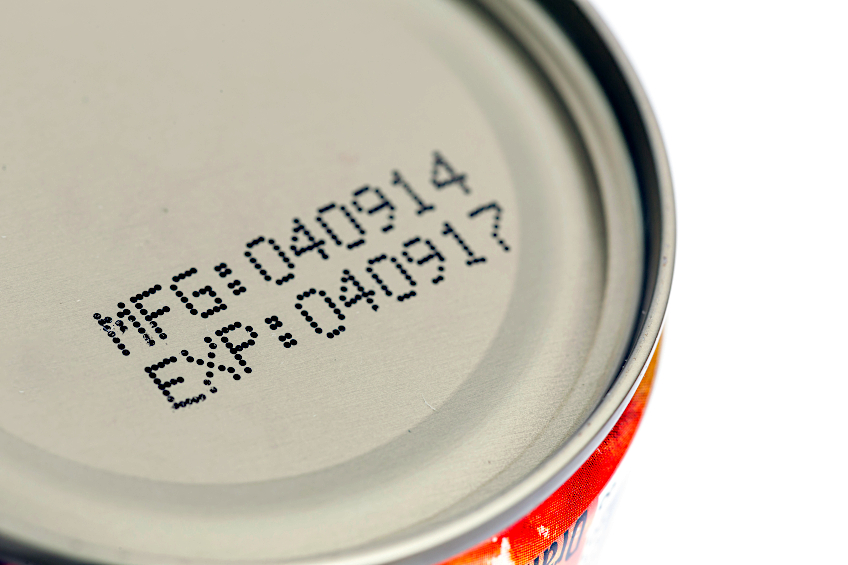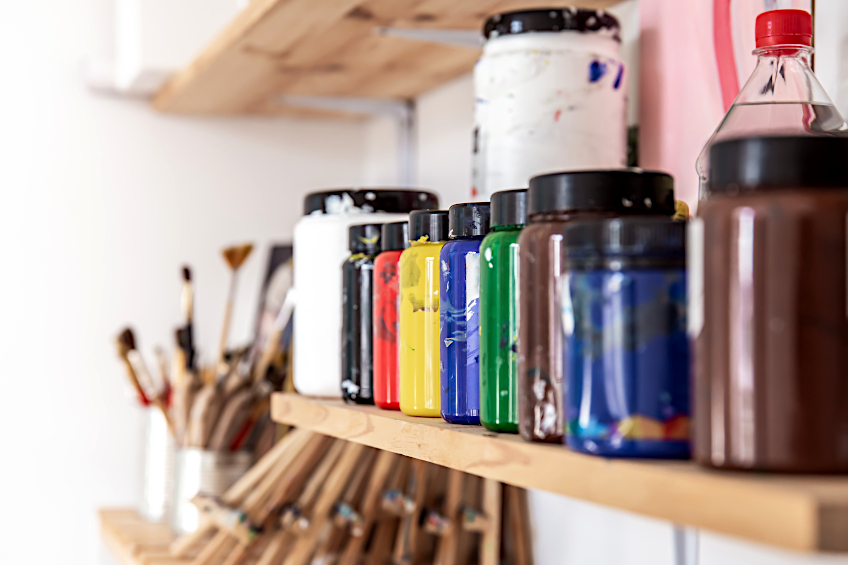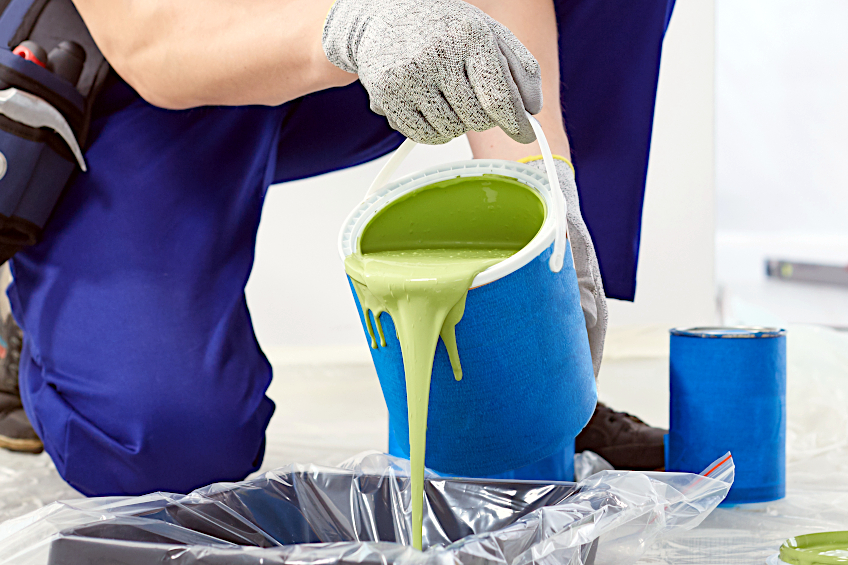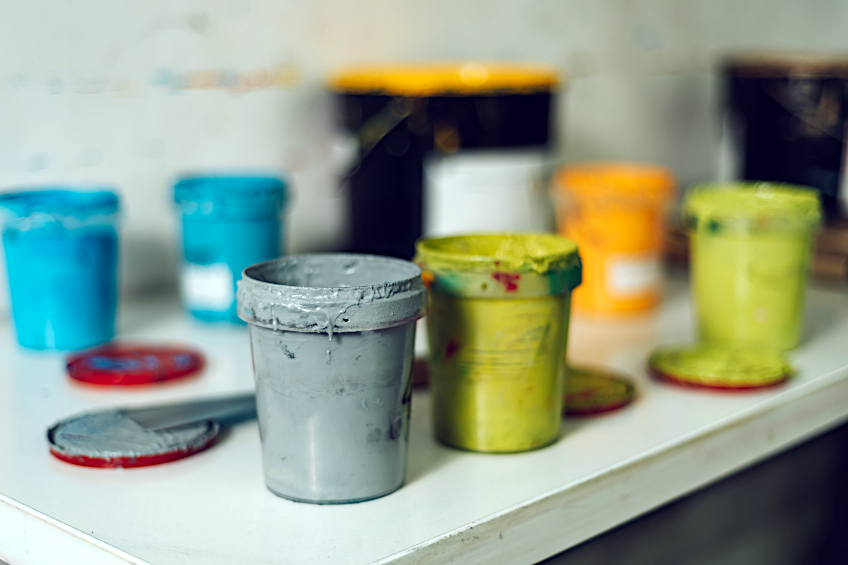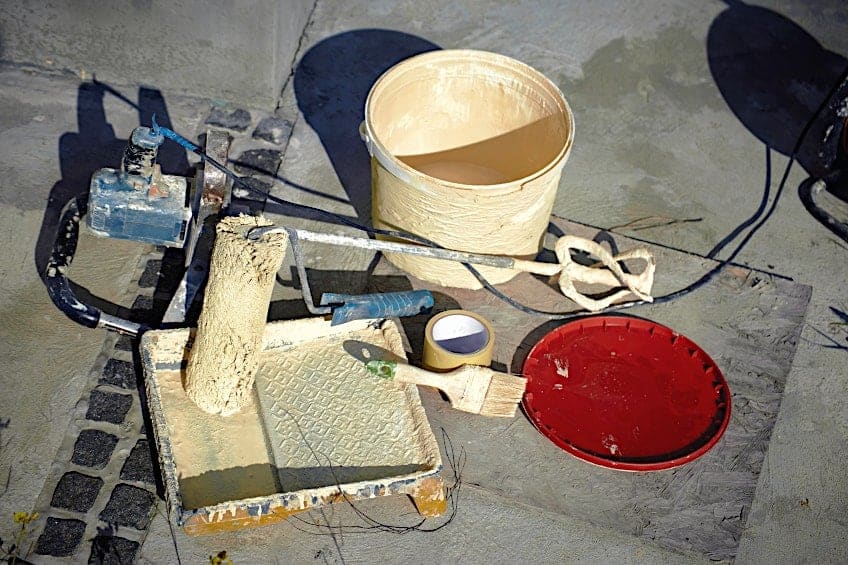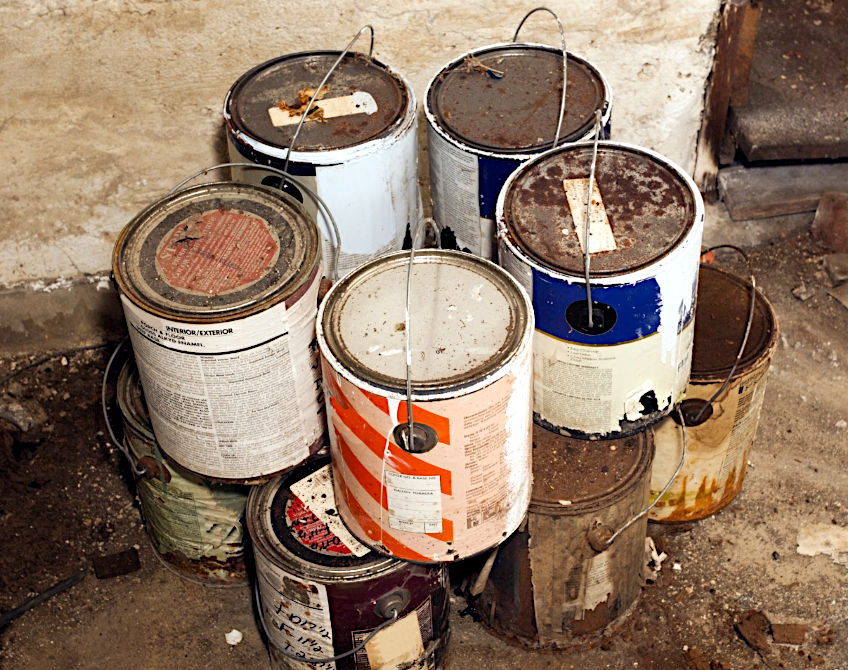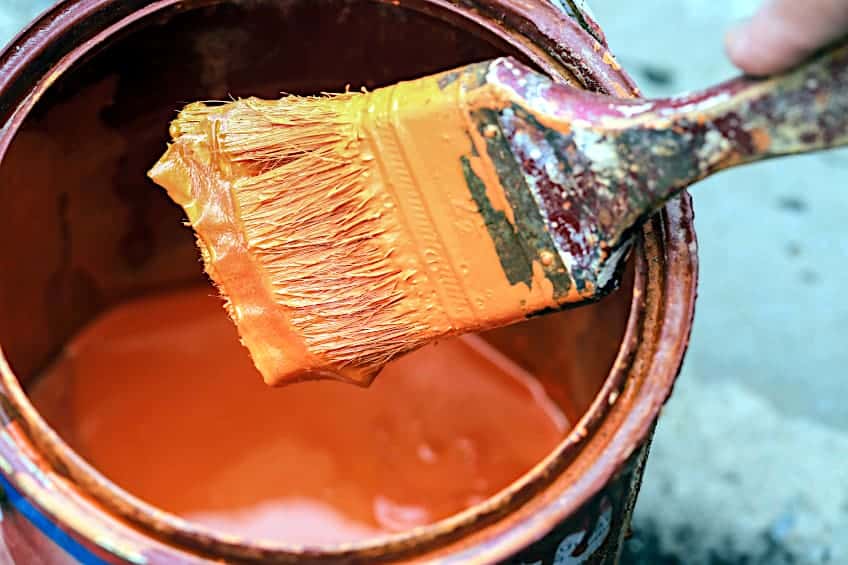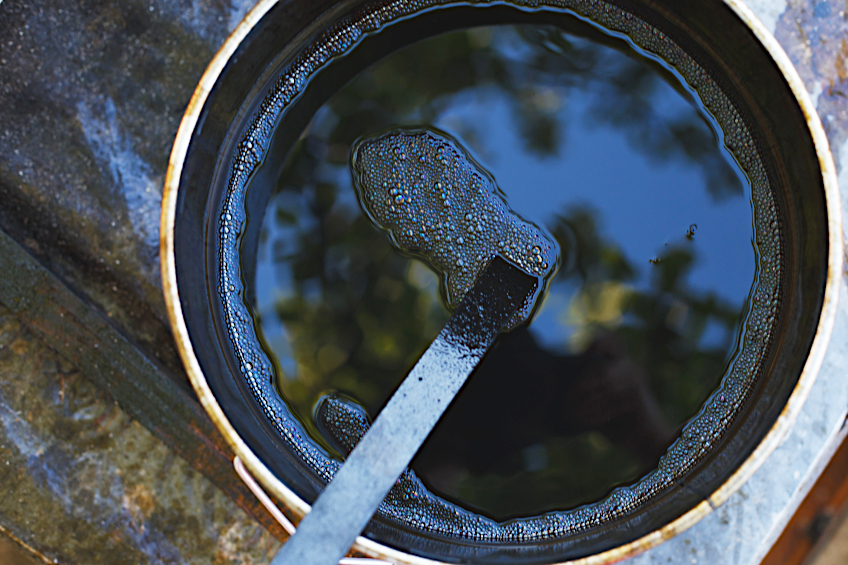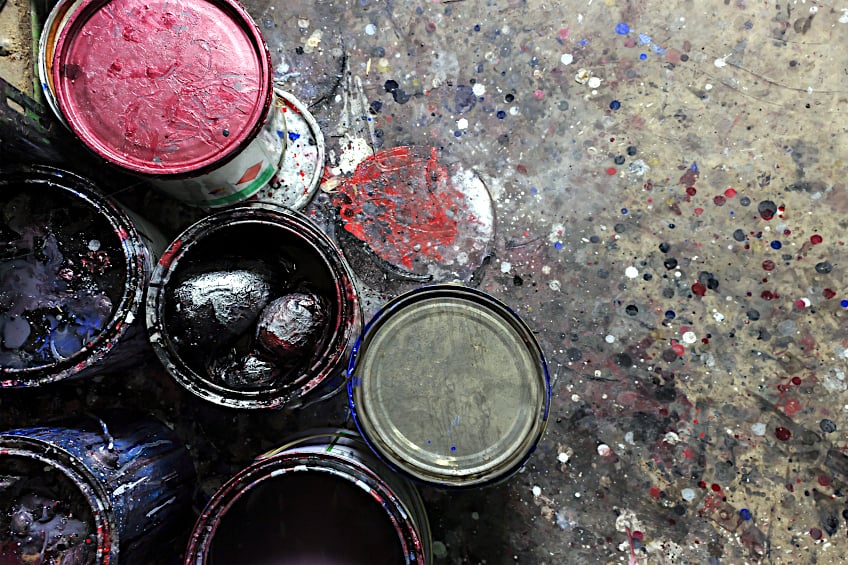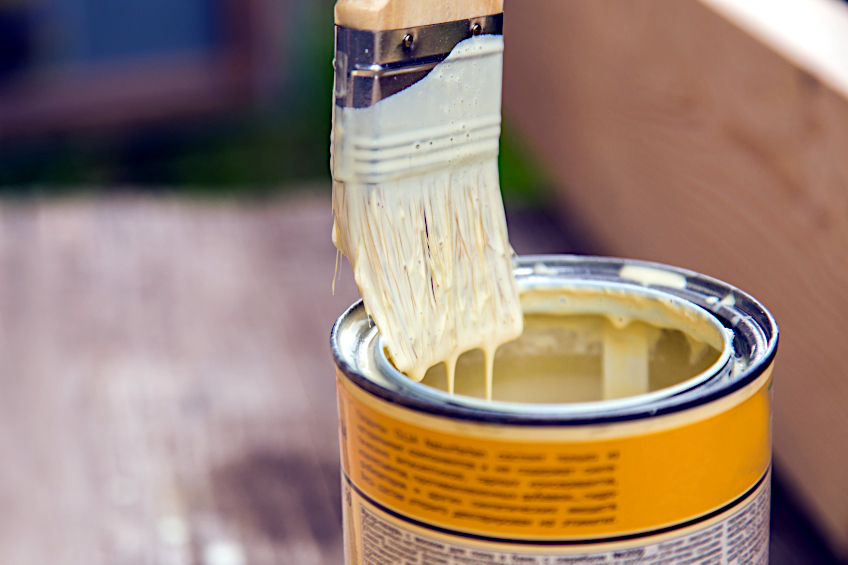How to Store Paint – Extend the Shelf-Life of Leftover Paint
This post may contain affiliate links. We may earn a small commission from purchases made through them, at no additional cost to you. You help to support resin-expert.com
Unless you’re in the habit of calculating exactly how much paint you will need down to the last micron, the chances are that you’re always going to have some paint left over when you’re done. There are options of course. You could simply dispose of your paint by contacting your local hazardous waste disposal team, or you could do it yourself. On the hand, you could store your paint for future use, which could end up saving you loads of time and money! This being said, let’s have a look at how to store paint, where to store paint, and some other things you should keep in mind to ensure that your paint is usable should you ever need it again in the future.
Table of Contents
Where Should You Store Leftover Paint?
Part of knowing how to store paint is knowing where you should store it. If you’re wondering where to store paint, it’s not so much to do with the specific location but rather with the conditions under which the paint will be stored. A lot like certain medications, certain criteria must be met for paint to be stored effectively.
Paint contains loads of substances that are reactive to changes in temperature. Changes in temperature and even changes in elevation and moisture can affect the viscosity of the paint. This can affect the finish, viscosity, texture, and even the color of the paint when you attempt to use it again, which means that storing your paint correctly is important if you intend on using it again.
What are the best conditions under which to store your paint? Well, the best conditions under which to store your paint are often indicated on the container. More often than not, the label will read “store in a cool dry place” which nicely sums up the ideal conditions for most (if not all) paint types aside from milk-based paint to be stored in.
The paint should be stored in a location that does not experience temperature extremes. This doesn’t mean that the locations have to be climate controlled, but just isolated enough so that things like airflow and direct sunlight won’t affect the temperature of the immediate atmosphere. So, where is the best place to store your leftover paint?
The best place to store your leftover paint is in a storage closet or in another place that has consistent levels of moisture, heat, and is exposed to sunlight. This being said, unless your garage is climate controlled and/or well-sealed, it can be a bad place to store your leftover paint. However, if you can manage the temperature and humidity in any space big enough to store your leftover paint, you should be okay.
What Is the Right Temperature at Which to Store Paint?
Knowing how to store paint cans is good, but temperature is important too. What is the right temperature to store paint at you ask? Well, as we mentioned previously paint needs to be kept at a constant ambient temperature to ensure the integrity of its various characteristics. If the paint is stored in a location that is too hot or too cold, eventually the paint’s molecular structure will break down, making it functionally useless.
What is the right temperature specifically then? The ideal temperature for the most commonly used paint types (oil-based, acrylic-based, and latex-based paint) is a cool 80 degrees Fahrenheit or 60 degrees Fahrenheit. Other types of paint might require different storage conditions, like milk paint which needs to be stored in a refrigerated environment at all times when not in use.
This can be challenging especially if you live in a climate that tends to vary from one extreme to the other throughout the year, but thankfully there are steps you can take to ensure that the temperature in your immediate environment remains stable for the duration of the paint’s storage. If you live in a humid environment, consider using a dehumidifier to soak up the excess moisture.
What is the best way to store paint in warm weather? If you stay in a county where the weather tends to be warmer for the majority of the year then you could simply use air conditioning or a few simple fans to ensure that the place you have chosen to store your paint is kept nice and cool. If power usage is a concern, simply ensure that there is a constant airflow both in and out of the space in question.
What is the best way to store paint in cold weather? If the weather in your area tends to be cold for the majority of the year, then you could simply install heating devices and/or insulation in the area where your paint will be stored. Decent insulation and a consistent ambient temperature should ensure that your paint does not deteriorate over time or freeze over due to the high concentration of moisture in its makeup.
Can Paint Be Stored Outside?
If you don’t have an abundance of space available for the storage of paint indoors, you might be wondering if it’s possible to sustainably store your paint outdoors. Well, if you don’t have a choice, you could create an insulated storage container that you can place outdoors to store your paint for you. You could make one from scratch or you could use an existing structure like an old refrigerator or toolbox, and simply retrofit it with adequate insulation in order to house your paint.
Can paint be stored outside then? Yes, it can. There are loads of things you can do to ensure that your paint cans are safe outside, as long as they aren’t exposed to the elements and the can is correctly sealed. We recommend allocating space for your paint and ensuring that it is well-enclosed and at a stable temperature.
How Do You Properly Reseal a Paint Can Lid?
Aside from where paint can is stored, how the paint is sealed plays an important role in whether paint will be able to survive storage. As we mentioned previously, when paint is exposed to the immediate atmosphere it starts to solidify as the moisture is released from its composition. This results in the paint spoiling, and if you work carefully this scenario can be avoided.
What is the best way to ensure that your paint lasts while stored? Well, since we’ve covered how to prepare your immediate environment for long-term paint storage, we should probably mention how to prepare the paint cans themselves for storage.
Sealing your paint can correctly ensure zero exposure to the atmosphere, which greatly minimizes the risk of contamination and/or your paint drying out.
What is the best way to seal your paint can for storage then? Well, arguably the best way to ensure that your paint can is re-sealed after it’s been opened is to use some plastic wrap over the mouth of the can, and then simply place the lid back on and listen for the plastic wrap setting into the recess. However, there’s an important step to take before you do this.
Before placing your plastic wrap over the mouth of your paint can it’s best to ensure that the rim and recess in which the lid sits are as clean as possible. How do you do this? Well, you could clean it off with a clean microfiber cloth, but there’s no guarantee that the solid bits of paint will come off. This is why we recommend dipping your cloth in a little bit of solvent beforehand.
Once the cloth has a little bit of solvent on it, run the edge over the recess and watch it pick up the solid bits of paint as it goes. Be careful not to let the solvent-soaked portion of the cloth touch the paint inside the can, as it could contaminate the mixture. Once you’re happy with the job you’ve done cleaning the rim of the can, allow the solvent to evaporate (this should happen fairly quickly).
Now for the important part. Sealing your can correctly can be challenging, so we recommend exercising caution and working on the floor to ensure the surface is stable. Cut a piece of plastic wrap from the roll and stretch it over the opening of the paint can. Once secure, place the lid of the paint can over the plastic wrap and press down until the plastic wrap and lid are firmly secure inside the recess.
How Long Does Open Paint Last?
While most people think that paint is paint, depending on the type of paint, the amount of time it lasts can vary considerably. There are other factors to take into consideration like the ambient temperature, where the paint is being stored, and how long it has been exposed to the immediate atmosphere, but overall different types of paint tend to last for set amounts of time. This being said, let’s have a look at three of the most popular paint types and how long you can expect them to last once opened.
| Type of Paint | Expected Lifespan |
| Oil-Based Paint | 2 – 15 years |
| Acrylic-Based Paint | 2 – 10 years |
| Latex-Based Paint | 2 – 15 years |
| Milk Paint (Premixed) | 2 years |
| Milk Paint (Powdered) | 1 week |
| Chalk-Based Paint | 1 – 5 years |
| Limewash Paint | 5 – 10 years |
How Long Does Oil-Based Paint Last Once Opened?
There are loads of paint types out there, but oil-based paints are one of the oldest paint types out there. It has been used for quite literally hundreds of years, and since its inception, it’s come a long way. What is oil-based paint exactly? Essentially it consists of natural or synthetic oils that have been mixed with a binder, coloring agents, and solvents.
Oil-based paint is one of the longest-lasting paint types on the market, with an extraordinarily long shelf life and an equally long lifespan once the can have been opened. Oil-based paints contain loads of solvents and binders, which are great for longevity but decidedly bad for the environment. This allows oil paints to last for quite a while once they have been opened.
How long do these paints last you ask? Well, according to most accounts oil-based paints can last for up to 10 years (if not longer) once they have been opened. If conditions in the storage area are ideal, oil-based paint is capable of lasting even longer. However, as the solvents begin to evaporate the binders begin to dissolve the paint will eventually become unusable.
How Long Does Acrylic-Based Paint Last Once Opened?
Oil-based paint might be one of the oldest paint types in the world but acrylic paint is by far one of the most popular. Seen as the modern-day replacement for oil-based paints, acrylic paints contain fewer VOCs (volatile organic compounds) and have more or less the same durability once applied to the surface of a workpiece.
Acrylic paints are unique. They consist of pigment that has been suspended in an acrylic binder, which, although lacking the sheen of oil-based paints, tends to have a wider variety of colors and tones to choose from. Its composition allows it to last for a decent amount of time when opened and a relatively long time when left on the shelf.
How long exactly? Well, when stored in ideal conditions most reports indicate that acrylic paint is capable of lasting up to 10 years once it has been opened. Unlike oil-based paint, this is a best-case scenario under ideal conditions. Acrylic paint doesn’t contain as much solvent as its oil-based counterpart and therefore will likely last for a shorter period of time in the average home.
How Long Does Latex-Based Paint Last Once Opened?
Latex-based paints (also known as water-based paints) are also relatively new, especially compared to oil-based paints. These paints are considered to be the best choice for the environment, and since we’re all trying to do our part to be sustainable this type of paint has been promoted quite avidly in recent years.
Latex paint is pretty unique, and what’s more, is that it doesn’t even contain any latex! Latex-based paints consist of resin, water, pigment, and extender, all of which are mixed into one another to form a rather runny paint capable of producing wonderful pastel and sheen hues. This paint, thanks to the lack of binders and solvents present in its composition, tends not to last very long.
How long you ask? Well, most latex-based paints are only expected to last around three years, and only when unopened. When opened, it’s anyone’s guess how long your latex paint will last. Due to decreases in density, the ambient temperature and humidity, and even light conditions can affect how long this paint lasts. In most instances, you can expect latex paint to last up to four years once it has been opened, given that it has been stored adequately.
How Should You Store Your Paint While Working?
Wondering what the best way to store your paint is while working? If you’ve ever worked on a big project, then you’ve likely experienced time actively working against you. After all, while you’re busy painting intently, life tends to get away from you. This means that you’ll likely need to pack away your paint when a session comes to an end.
However, even if it’s just for a short period of time it’s important for you to store your paint correctly to ensure its longevity and make sure that it doesn’t get contaminated. How do you go about storing your paint while you take a break then? Well, if you’re painting outdoors then a good idea would be to ensure that you bring all of your paint cans and tools inside.
If you’re painting indoors this isn’t a problem but that doesn’t mean that you need to do absolutely nothing. As you would do when storing paint for future use, place some plastic wrap over the opening and ensure that the lid is secure when attaching it to the can. Next, ensure that you keep the can in a space with a stable and consistent temperature while you’re away.
As you can see, the rules for storing paint while you’re away are pretty simple. The rules to preserve paint for short periods of time are to ensure that the paint is well sealed, kept in an environment with a stable temperature and humidity, and to ensure that both the can and the paint are not exposed to direct sunlight at any point.
This might be overkill if all you’re doing is running to the store for 20 minutes, but if you’re not going to be able to work on your project for a week or so then we recommend taking these steps to avoid returning to a paint that is contaminated and/or unusable. If you’d like to preserve paint for longer, have a look at some of the other methods we mentioned previously.
How to Tell if Paint Can No Longer Be Used
In the pursuit to preserve paint it can be easy to forget that despite all your best efforts, your paint will eventually expire and/or become completely unusable. This usually happens when the paint is not sealed and stored correctly, resulting in the separation of its components, evaporation of its solvents, and the eventual solidifying of its pigments and heavier elements. How do you tell if your paint can no longer be used though? Here are a few things you should look out for
Look Out for Strange Smells
One of the key indicators that your paint has expired is a strange smell emanating from the can. The reason that opened cans of paint smell when they expire is due to the presence of bacteria and mold in the mixture. This smell can be quite pungent and is a dead giveaway that your paint will no longer be usable, at least not in the way the manufacturer or you intended.
Look Out for a Chunky Consistency
Another key indicator that your paint has gone bad is the consistency of said paint once it had been opened. You likely know the consistency of the paint from the last time you used it, and it probably wasn’t all runny and full of little chunks of paint. This is a dead giveaway that your paint has gone bad, and even though it can be salvaged in some instances, we recommend disposing of it responsibly to avoid disappointment.
Look Out for a Strange Texture
This is pretty much in the same vein as looking out for a chunky consistency, but depending on the type of paint you’re using you could have a weird texture upon expiry before you have a weird consistency. This being said, a filmy or otherwise gel-like consistency is an indicator that your paint is either on its way out or is already not fit for use.
Look Out for a Dry Top Layer
Again, the look and feel of your paint are the best things to consider when trying to determine if your paint is still usable. When paint begins to degrade it tends to form a near-solid layer of residue on top of the mixture. This is a good indication that the degradation process has begun, but it might still be salvageable should you mix it with some new paint.
Look for Differences in Color
One of the easiest ways to tell if your paint is expired is the have a look at the color. Most paints, especially oil-based paints tend to have a fairly consistent color to them. This color is deep and the texture is palpable, so if your paint strays too far from this image it’s pretty safe to say that there’s probably something wrong with the mixture.
Can You Use Expired Paint?
Is it possible to use expired paint? Sure, but this doesn’t mean it’s a good idea. When paint begins to go off it tends to smell pretty bad, and this doesn’t change when the paint has been applied to a surface. Additionally, when the paint starts to go off it loses some if not all of the adhesive properties that it had initially. This results in runny paint with poor consistency.
Let’s not forget the primary reason that most of us use paint. Paint is used to enhance the aesthetics of a space or surface, and since paint tends to lose the consistency and texture it’s made with once it goes off, it isn’t a good idea to try and use it. This being said, it’s best to restore or replace old paint instead of taking a chance with your workpiece.
How Should You Organize Paint Cans?
Depending on how much space you have available to you, you might be wondering how to organize paint cans effectively. If you have shelving units to store your paint when it isn’t in use, we recommend storing the heavier cans on the bottom shelves, and the lighter, smaller cans on the top shelf for safety and ease of access.
There are loads of ideas on sites like Pinterest detailing how to organize paint if you don’t have shelving units too. The same principle applies throughout, simply place the heavier cans on the floor and add the smaller, lighter cans on top of them. If you’re thinking about doing this, we recommend avoiding stacking them too high for safety reasons, and so they’re easier to get a hold of should you need them.
Now that you know how to store paint cans, where to store them, how long certain types of paint last before and after they have been opened, how to tell if your paint has gone bad, and whether or not you can use paint once it’s gone bad, it’s time for you to get out there and put your newfound knowledge to the test. Remember to always wear the appropriate personal protective equipment when working with paint, regardless of the type.
Frequently Asked Questions
Is Storing Paint in Plastic Containers Safe?
If you have a damaged paint can or simply have too little paint to justify keeping it in its can, you might be wondering if storing paint in plastic containers is safe. Yes, as long as the container is suitably rigid and can be properly sealed, you can use a plastic container to store your paint.
Can You Store Latex Paint?
Wondering how to keep paint from drying out once stored? One of the best ways to keep paint from drying out once stored is to ensure that the ambient temperature is consistent and that the container does not come into contact with direct sunlight.
Can You Stop Paint From Drying When Stored?
Wondering how to keep paint from drying out once stored? One of the best ways to keep paint from drying out once stored is to ensure that the ambient temperature is consistent and that the container does not come into contact with direct sunlight.
How Should You Store Latex Paint?
Wondering how to store latex paint? There are various tutorials detailing how to store latex paint effectively, but the most important factors to keep in mind when it comes to latex paint storage is to ensure that the location has a consistent temperature, humidity level, and is not exposed to direct sunlight.


